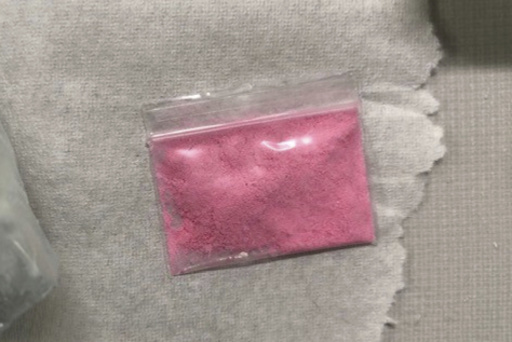
A recreational substance referred to as “pink cocaine” is generating significant buzz and confusion, as it usually lacks any actual cocaine content.
This pink-hued powder is essentially a mix of various drugs that have been colored pink, and its emergence in drug confiscations has prompted alerts from law enforcement officials.
Known also as “tusi,” these nicknames serve more as marketing terms than accurate descriptors. Experts assert that it is uncommon for this powder to include any cocaine; rather, it is predominantly composed of ketamine, which produces markedly different effects.
What accounts for its pink color?
According to Joseph Palamar, a drug trend researcher at NYU Langone Health in New York, the bright hue comes from the addition of food dye or coloring agents.
“While it sometimes includes cocaine, it is generally more of a mixture based on ketamine,” Palamar explained. Analysis of various batches has revealed the presence of other substances such as methamphetamine, MDMA, bath salts, caffeine, and even opioids.
He noted that the mixture could be produced by anyone who possesses a few different drugs and some pink dye.
The term “tusi” is believed to have originated as a reference to 2C-B, a recreational drug that gained popularity in the rave culture during the 1990s, well-known for inducing euphoric sensations.
A study that Palamar published a year ago highlighted that assessments of “tusi” revealed it seldom contains any traces of 2C-B.
Today’s youth may be unaware of the term’s history and find the term “pink cocaine” confusing, Palamar indicated.
“It’s just colorful powder that their friends are consuming, and they likely have little idea what it’s intended to be,” he remarked.
What makes pink cocaine hazardous?
The primary concern lies in the unpredictability of its composition. Users could experience unforeseen side effects or consume larger quantities than their previous experiences suggest they can manage.
Ketamine, a potent anesthetic approved for surgical use, has gained popularity in recent years for recreational uses as well as for treating depression, anxiety, and pain.
However, it poses risks including hallucinations and negative effects on breathing and heart functions.
“For most, ketamine isn’t an enjoyable substance,” Palamar commented. “It can create a sensation of isolation and distort perceptions in a disorienting manner if taken in high doses.”
For someone intoxicated at a social event who mistakenly believes that cocaine may counteract the effects of alcohol, discovering that “pink cocaine” is primarily ketamine could lead to unwelcome surprises, Palamar cautioned.
“Consuming it after drinking may cause severe nausea and the dissociative effects will likely be uncomfortable,” he added.
Where is this pink cocaine originating?
Back in May, the U.S. Coast Guard announced that it had intercepted pink cocaine alongside other narcotics off the coasts of Mexico and Central and South America.
“That was the first instance I encountered of large shipments being imported to the United States under the name tusi,” Palamar stated.
However, he noted that it could just as easily be synthesized by drug traffickers within the United States, who create their own mixtures.
